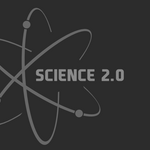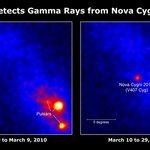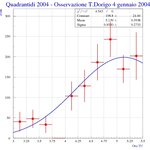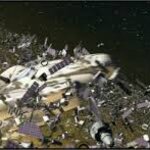Space
Ah, summer, the time to neglect thinking and just build crap. So, much as with the DIY Clean Room, I started gathering bits to make the DIY Vacuum chamber.
I'm building a vacuum chamber to make sure that my satellite doesn't go kablooey when it hits space. Vacuum is a nasty environment. We have no pressure, we have outgassing, and (least we not forget) we have the simple removal of air.
If only the alien had used my vacuum testing first!
Materials 'outgas', which is to say, liquids and volatile solids boil off. This outgassing can then coat itself onto nearby parts…

Proof of aliens within 25 years? What's the basis for this optimism?
Well, of course, it's the Drake equation. It had to be. While it is certainly reasonable that everyone has their own perspective and opinion about the likelihood of alien life, it is not reasonable to pretend that the "Drake equation" provides some sort of inside track.
The article, "Proof of Aliens Could Come Within 25 Years, Scientist Says", lays claim to Carl Sagan's "calculation" of N = 1,000,000, while Drake himself places the value much lower at 10,000. So with two orders of magnitude separating…
You must be quite familiar with what happens when you toss a pebble into a pond. You might describe the simple event as a massive rotating object splashing into a deformable fluid. Or, you might… not. However, astronomical bodies are like these pebbles sloshing around in a deformable fluid, called space-time, and this interaction, too, can produce those expected waves extending out from where the pebble drops.
So claimed Albert Einstein in 1916 when he hypothesized that the universe is filled with special waves, called gravitational waves, that are the rippling effects from stars, pulsars,…

How did the first stars and galaxies form? Are there other planets like Earth? What is the universe made of? These are the fundamental questions that astronomers hope to answer in the next decade with a new generation of space- and ground-based telescopes. Today an expert panel presented a detailed plan prioritizing which telescopes should be funded to maximize the expected scientific returns while fitting within realistic budget expectations.
Continued support for Hubble as well as its successor, JWST, were implicit throughout the report. While these telescopes are taking detailed images of…

How did the first stars and galaxies form? Are there other planets like Earth? What is the universe made of? These are the fundamental questions that astronomers hope to answer in the decade with a new generation of space- and ground-based telescopes. Today an expert panel presented a detailed plan prioritizing which telescopes should be funded to maximize the expected scientific returns while fitting within realistic budget expectations.
Continued support for Hubble as well as its successor, JWST, were implicit throughout the report. While these telescopes are taking detailed images of small…
Ever been stuck in an airport? A foreign country? Try being stuck in orbit! Poor Air Force Major Abacha Tunde plus a colleague were trapped on a Soyuz in orbit for over 14 years. Fortunately, thanks to email, they were (presumably) able to get help getting down. Here is their tale.
As related by Steve Johnson and verified using teh Internets, "the writer claimed to be an astronaut on the International Space Station who couldn't return from space due to a revolution in his country putting a halt to its space program. Fortunately, his rich uncle had just died, and if you'd let him use your bank…

Citizen scientists are doing big things in astronomy in 2010. A few days ago, three amateurs discovered PSR J2007+2722, a neutron star that rotates 41 times per second and a recent Science article highlights V407 Cyg in the constellation Cygnus, which is 9,000 light-years away and is a symbiotic binary containing a compact white dwarf and a red giant star about 500 times the size of the sun.
On March 11, amateur astronomers Koichi Nishiyama and Fujio Kabashima in Miyaki-cho of Saga Prefecture in Japan imaged a dramatic change in the brightness of V407 Cyg - 10 times brighter than an…

The odd shape of NGC 4696, the largest galaxy in the Centaurus Cluster (galaxy cluster Abell 3526), leads to fundamental science questions. First, why is it such a strange shape? And what are the odd, capillary-like filaments that stretch out of it? What is the role of a large black hole in explaining its odd appearance?
NGC 4696 is different sort of elliptical galaxy. Lacking the complex structure and active star formation of their spiral brethren, elliptical galaxies are usually little more than shapeless collections of aging stars. Most likely formed by collisions between…

This is a good year for summer meteor watching. The moon, just past new, will not interfere with observations of faint meteors. And the Perseid shower, originated from the dust left behind in the orbit of comet Swift-Tuttle, will produce a nice show.
Perseids are a rather stable stream, and they produce a detectable rate of meteors from late July to late August, with peaks in the nights of August 11th and 12th, depending on the exact trajectory that the Earth takes while plunging in the dust-ridden area of the solar system. The rate is usually encoded in the acronym "ZHR", for zenith-…

Will picosatellites pollute space like in Wall-E? Why do we let amateurs kill Mother Earth? Send in the UN!
These are part of the overwhelming comments following my Discovery interview. I am amazed at the variety of space litter connondrums presented. I thought about writing a calm, well-measured response, but you know what? If the posters can rant, so can I!
Unlike them, however, I will rant with scientific backing on my side.
We see their lack of proportion. That there will be 'millions' of these things launched? InterOrbital should be so lucky. That what we're doing is…